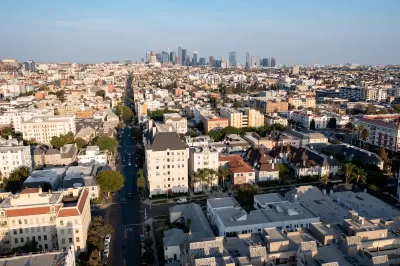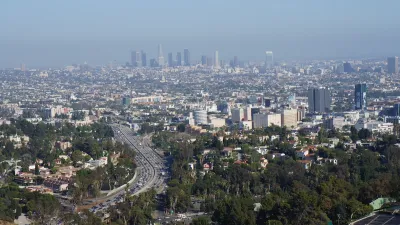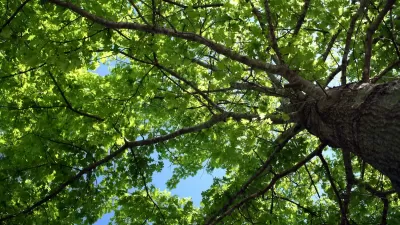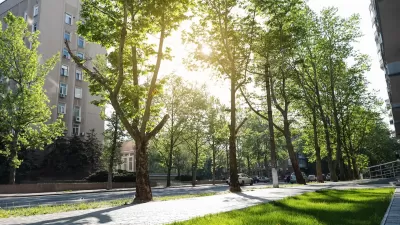Koreatown is one of Los Angeles's densest and most park-poor communities. A privately funded tree planting initiative will bring some much needed greenery and shade to the area.

Shade equity is typically defined as fairness or justice in the way people have access to tree shade in their neighborhood regardless of factors like race, ethnicity, income, etc. As reported by Josie Huang, there is now a privately-funded tree planting initiative to bring some greenery and shade to Koreatown in Los Angeles.
To date, Koreatown Youth + Community Center has raised over $600,000 as part of its plan to speed up the rate of tree planting in the neighborhood, most of the money so far coming from a K-Pop impresario who has made L.A. his second home. The non-profit currently plants about 1,000 trees annually through a $1 million contract with the city, and expects to add another 1,000 trees in the coming year through the privately-funded initiative. The hope is to exceed a $1 million fundraising goal for the first year, so the program can continue for several years.
Koreatown is one of Los Angeles' most park poor and densest communities. According to the 2016 L.A. Countywide Parks Needs Assessment, Koreatown only has 0.1 acres of parkland per 1,000 residents which is significantly lower than the countywide average of 3.3 acres per 1,000 residents. Also, only 39% of Koreatown residents live within walking distance (half-mile) of a park, which is noticeably below the countywide average of 49%.
FULL STORY: In Tree-Starved Koreatown, More Greenery On Its Way

Maui's Vacation Rental Debate Turns Ugly
Verbal attacks, misinformation campaigns and fistfights plague a high-stakes debate to convert thousands of vacation rentals into long-term housing.

Planetizen Federal Action Tracker
A weekly monitor of how Trump’s orders and actions are impacting planners and planning in America.

In Urban Planning, AI Prompting Could be the New Design Thinking
Creativity has long been key to great urban design. What if we see AI as our new creative partner?

Car Designs Make it Harder to See Pedestrians
Blind spots created by thicker pillars built to withstand rollover crashes are creating dangerous conditions for people outside vehicles.

Cal Fire Chatbot Fails to Answer Basic Questions
An AI chatbot designed to provide information about wildfires can’t answer questions about evacuation orders, among other problems.

What Happens if Trump Kills Section 8?
The Trump admin aims to slash federal rental aid by nearly half and shift distribution to states. Experts warn this could spike homelessness and destabilize communities nationwide.
Urban Design for Planners 1: Software Tools
This six-course series explores essential urban design concepts using open source software and equips planners with the tools they need to participate fully in the urban design process.
Planning for Universal Design
Learn the tools for implementing Universal Design in planning regulations.
Appalachian Highlands Housing Partners
Gallatin County Department of Planning & Community Development
Heyer Gruel & Associates PA
Mpact (founded as Rail~Volution)
City of Camden Redevelopment Agency
City of Astoria
City of Portland
City of Laramie





























